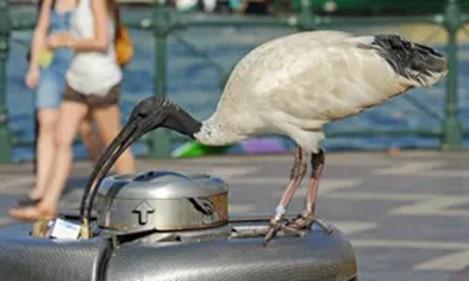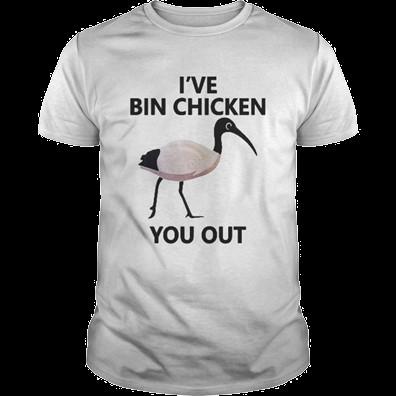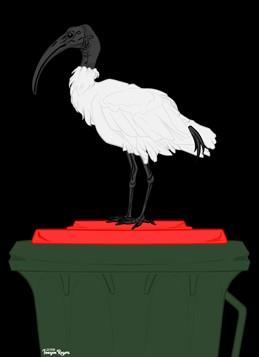
3 minute read
Semester in Australia Volume 3: White Ibis
Semester in Australia: Volume 3 Ella GrandeWhite Ibis (Threskiornis molucca)
By Ella Grande
As my time in Australia comes to an end, so must my Trail articles! Picking my final animal for this issue was tough. I really could not decide who to choose; wombats, platypus, Tasmanian devils, dingoes, or cassowaries. They’re all so interesting. However, those animals are all very loved and celebrated. So, I decided to pick a more infamous creature. To the Australians, the White Ibis (Threskiornis molucca) is nothing but a pest and a scavenger, like a seagull or a pigeon. Constantly rummaging through trash bins for a quick bite, their beautiful white feathers are often dirty and brown. For that reason, the Australians nicknamed these guys “bin chickens.” At any outdoor cafe in Sydney, you’re bound to witness the employees chasing away these birds from customers trying to enjoy a meal. I even had a White Ibis land on my table and steal some lettuce from my salad. They aren’t shy. The dislike for them even lead to the creation of a Facebook event in 2016 titled “International Glare at Ibies Day” where people gathered in the local park to “glare and show your general distaste” towards them (Allatson and Cooper, 2018). However, as much as people hate the White Ibis, there’s the same amount of people on the other side that love them (like me). They are incorporated in pop culture and art all over Australia, being found on T-shirts and murals. They even got second place in 2017 for Australia’s Bird of the Year which lead to a news article titled: “Ibis lovers outraged over shock Bird of the Year result” (Foster, 2017). So, it’s quite the lovehate relationship here in the land down under. Regardless of the public opinion, I find the White Ibis to be quite interesting because they haven’t always been the pesky trash pickers that they are today. With the rapid urbanization of the Australian coasts, cities popped up everywhere. This forced the current wildlife to adapt to these new conditions. The White Ibis was originally a wetland


bird, as its long black bill is perfect for digging through mud to find crayfish and mussels (Australian Museum, 2019). But as their natural habitat diminished, they moved and adapted. Wildlife ecologist at Sydney’s Royal Botanical Gardens, Dr. John Martin, comments on how this species is “still colonizing new areas” and have adapted to their new diet consisting of “anthropogenic food sources: grubs and worms from grass sports fields and parks, invertebrates from stormwater retention basins, direct feeding from humans and scavenging from bins and landfills” (Jones, 2015). The bin chickens here get a bad rap, but it’s not their fault. Humans came in and took over their habitat and then unfairly gave them this loathsome nickname all because they were just trying to adapt and survive. We may think their annoying but imagine how annoying that gigantic skyscraper is in the place where they used to live happily and unbothered. So, if you’re ever in Australia and come across a nosy White Ibis, it wouldn’t be the worst thing in the world to throw him a hot chip or a piece of your meat pie when no one’s looking.

Works Cited
Allatson, P., & Connor, A. (2018, September 6). How the 'bin chicken' became a totem for modern Australia. Retrieved from https://www.abc.net.au/news/2018-09-07/ibis-bin-chicken-rise-totem-for-modern-australia/10209332. Australian Museum. (2019). Australian White Ibis. Retrieved from https://australianmuseum.net.au/learn/animals/ birds/australian-white-ibis/. Foster, A. (2017, December 11). Ibis lovers outraged over shock Bird of the Year result. Retrieved from https:// www.news.com.au/technology/science/animals/ibis-lovers-outraged-over-shock-bird-of-the-year-result/newsstory/9e423525ae57452b9c19d87ea3681b2e. Jones, A. (2015, October 13). Hated and misunderstood, the ibis brings an important environmental message. Retrieved from https://www.abc.net.au/radionational/programs/offtrack/behind-the-ibis-invasion/6842242.










